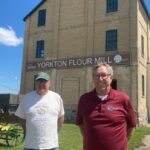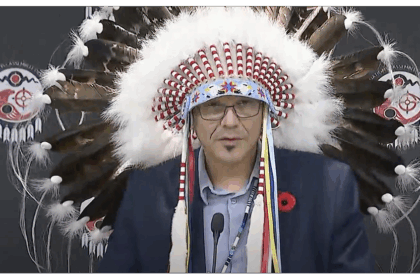Author of the article: Yutaro Sasaki • Local Journalism InitiativePublished Jun 16, 2025 • Last updated 33 minutes ago • 2 minute readAgriculture and Agri-Food Canada scientist Audrey Murray inspects her mesocosm pod at AAFC’s Harrington Research Farm in Harrington, P.E.I. Photo by Yutaro Sasaki /Local Journalism InitiativeHARRINGTON, P.E.I. – An experiment at a P.E.I. research facility could help Alberta dairy farms build a more sustainable method to irrigate their cattle feed.Agriculture and Agri-Food Canada scientist Audrey Murray is researching using wetlands to filter the sludge that builds up in the dairy farm lagoons currently in use in many Alberta farms, which often contain a high concentration of manure and could offer a positive ecosystem for the soil.THIS CONTENT IS RESERVED FOR SUBSCRIBERS ONLY.Subscribe now to access this story and more:Unlimited access to the website and appExclusive access to premium content, newsletters and podcastsFull access to the e-Edition app, an electronic replica of the print edition that you can share, download and comment onEnjoy insights and behind-the-scenes analysis from our award-winning journalistsSupport local journalists and the next generation of journalistsSUBSCRIBE TO UNLOCK MORE ARTICLES.Subscribe or sign in to your account to continue your reading experience.Unlimited access to the website and appExclusive access to premium content, newsletters and podcastsFull access to the e-Edition app, an electronic replica of the print edition that you can share, download and comment onEnjoy insights and behind-the-scenes analysis from our award-winning journalistsSupport local journalists and the next generation of journalistsRegister to unlock more articles.Create an account or sign in to continue your reading experience.Access additional stories every monthShare your thoughts and join the conversation in our commenting communityGet email updates from your favourite authorsSign In or Create an AccountorArticle contentRead More The importance of wetlands in Prince Edward Island OPINION: Wetlands need protecting Murray gave a tour of her experiment, which is still in the early phases, to The Guardian on June 13, saying she plans on building a wetland after the lagoon.The lagoon already provides some treatment to the wastewater, she said.“The wetland will provide further filtering. Then, the water can be reused for irrigation. People would still be able to land-apply the solids in the lagoon,” Murray added.While the ultimate project is based in Alberta, Murray is conducting her pilot testing at Harrington Research Farm, analyzing the effectiveness of mesocosms when applied with dairy wastewater from P.E.I.MesocosmA mesocosm is an outdoor experimental system that studies the natural environment under controlled conditions.“We’ll take dairy wastewater from the P.E.I., run it through our mesocosms with different retention times, different soil types, different styles of wetlands, to try and decide the best design before we build a full-scale wetland,” Murray said.Article content A mesocosm is an outdoor experimental system that studies the natural environment under controlled conditions. Photo by Yutaro Sasaki /Local Journalism InitiativeThe project, which is funded by Alberta Innovates and Result Driven Research, is exciting, she said.“I’ve already had a few people call me — farmers or others interested in building waste treatment. There’s a whole number of applications for this on their farms,” said Murray.There doesn’t seem to be anything in the public realm right now that shows how to design this kind of system.“So, to be able to give some of that guidance and help them out because they want to help the environment, that’s cool, right?” said Murray.Sharing ideasMurray says she has an idea of how to treat the wastewater.“As scientists, we read all the other scientists’ work. And sometimes they perform well, sometimes they don’t,” she said.Mesocosms are much smaller, and this will allow them to change the flow rate and design, Murray said.“We need to make the most efficient use of water as possible (in terms of the project),” she said.Article content Before the mesocosm pod is finalized, a layer of rocks is placed to build the different filtering capabilities of a mesocosm. Photo by Yutaro Sasaki /Local Journalism InitiativePossible benefitsWetlands have a huge number of ecosystem benefits, Murray said.“They provide to the environment, so it helps the environment and it provides water for farmers, so it helps the farmers out, too,” she said.As a result, there’s sort of a net benefit and it’s a nature-based treatment for the environment, Murray added.“I would like to see something that works. (Hopefully) it provides a high quality of water, but also works with the farming practices and helps the farmer,” she said.“Then we will produce a set of guidelines, Alberta-specific and dairy wastewater specific, so that if other farmers want to build this, they can,” Murray said.Yutaro Sasaki is a Local Journalism Initiative reporter, a position funded by the federal government. He can be reached at ysasaki@postmedia.com and followed on X @PEyutarosasaki.Article content
How wetlands can provide potential benefits to Canadian dairy farmers











